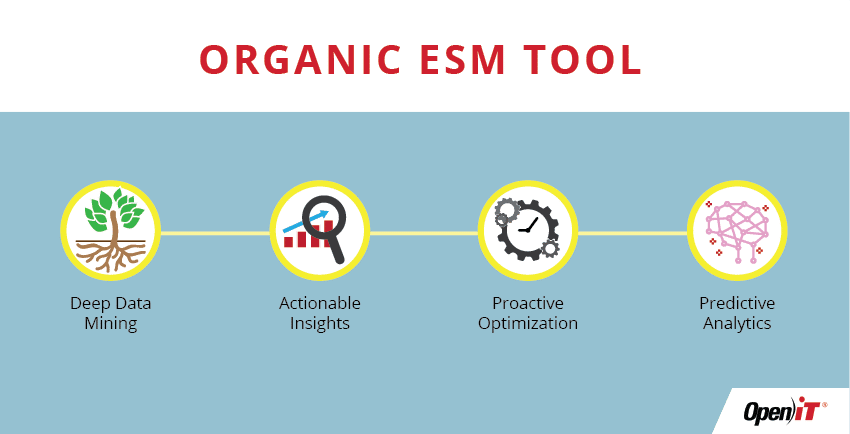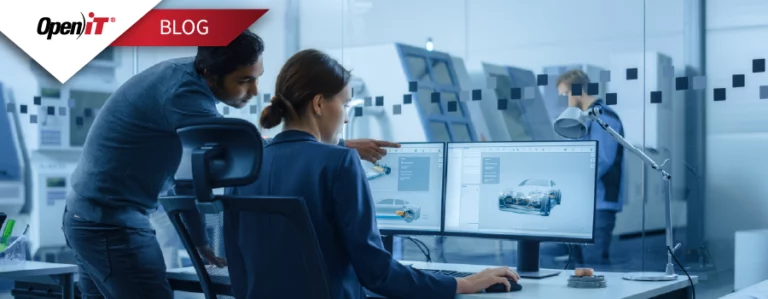The growing and increasingly competitive industry of Software Asset Management (SAM) continues to drive a smarter market focused on License Usage Analytics, usage metering, analysis, and optimization with innovative tools and comprehensive consultancy services.
However, within the SAM Space, there is a special niche for the management of engineering software assets.
The difficulty of operating under multiple, complex licensing models is further exacerbated by the fact that each engineering software license could be worth a king’s ransom.
For these reasons, advanced usage analytics is on top of the list of must-haves for any engineering software management solution.
And although many SAM tools and services offer nifty features, only a few are adept at managing engineering software. Fewer still are those that satisfy these four essential criteria for an all-around engineering software management tool.

I. Rigorous Metering and Monitoring
Effective data mining requires brilliant mechanisms that understand the demanding challenges of distributed data and operations, big data, data privacy, and user-friendliness.
To tailor fit the innovation of SAM tools specifically for engineering software, analysts focus on some key elements from these challenges.
These include (a) extensiveness of data collection, (b) availability of real-time data, (c) configurability of user/group information, and (d) data transformation capabilities. IT Managers and C-Suites tend to look even closer from obvious perspectives by asking:
- Which applications are being used and by whom?
- Which users are checking out multiple licenses at a time?
- Which users are using licenses continuously for more than 24 hours?
- How active are the users’ mouse, keyboard, CPU or I/O?
- How can user privacy be kept above all of this?
These specific questions have set the standards in evaluating the data mining capabilities of engineering software management tools. For one, very few succeed in combining rigorous metering techniques with excellent user privacy policies.
II. In-Depth Analysis
Among many organizations, engineering software management is a solution that uncovers license usage problems and, from there, creates action points for employees and company-wide process flows.
By synthesizing usage history with current usage trends, these tools continuously devise formulas in supporting customers from many different industries around the world.
Particularly, analyzing engineering software usage needs insights that consider the functions and features of each individual product, as well as the behavior of the engineers and other technical professionals.
An excellent license usage analytics tool should be able to answer the following:
- What is the minimum number of users for whom the company needs to provide licenses?
- Which licensing models, or a combination thereof, would be best for the next license renewal?
- Which users need which software training?
- Which users should be included in or excluded from accessing limited licenses?
A tool that paints the grey area between user and license usage analytics, and quantifies it – that is the required in-depth analysis for an effective engineering software management tool!
III. Proactive Optimization
“Knowing is not enough; we must apply.” -Johann Wolfgang von Goethe
Applying decisions is the most pressing issue post license monitoring. Thankfully, the 21st century is a time when automation is the backbone of optimization, and innovators of engineering software management tools are in the forefront. The most effective engineering software management tools now feature proactive alerts and automatic suspension or termination of licenses depending on the user behavior observed from individual workstations. Thus, the competition is on how successful the tools are in:
- establishing a social connection between managers and users with respect to the organization’s policies, project priorities, etc., and the member’s hierarchy and work behavior;
- minimizing troubles for executives and managers on policy implementation by automatically harvesting unused and/or underutilized licenses; and
- maximizing savings for the organization’s software assets.
With these points, the following key questions should clarify takeaways for managers and executives:
- How often should individual users be alerted about their idle applications?
- Which license needs to be suspended when?
- How much can be saved by reducing the number of licenses for which product?
IV. Smart Forecasting
From market research to credit rating, many different industries have come to embrace Predictive Analytics (PA), including those that utilize engineering software.
Yet, finding a tool with a PA module remains a challenge. For a few rare engineering software management tools, PA is available to alert IT managers on anomalies. These unusual events may or may not be affecting the working environment but could potentially cause future problems.
With intelligent predictive algorithms, PA can also forecast future usage, which could allow proper scheduling of projects or some license-related actions, such as resource allocation and renegotiations with product vendors.
Some of the vital questions that could be answered by tools with forecasting features are:
- When would the users most likely experience denials?
- When would be the best time to do certain projects?
- When would be the best time for training?
- Where should we reallocate our license budget?
- What is the most probable usage trend for the next few months?
- Are there anomalies in the license usage trend?
Again, PA is a rare feature for engineering software management tools.
Yet, it undoubtedly adds a layer of optimization and futureproofing to those that have it. Read more about the ingenuity of Predictive Analytics in Engineering Software Management.
Wrap-Up
When these four attributes are imbued in any engineering software management tool, a plethora of possibilities follow.
The complementary nature of each one supported by a data-healthy environment is invaluable in developing an organic tool, to say the least. This is why these criteria are highly important in choosing the best engineering software management tool.
Who knows? We may be looking at tools that would revolutionize engineering software management.
Find out how license usage analytics helped Maersk Oil gain over 2100% ROI.
Take a guided tour of our solutions and services.






